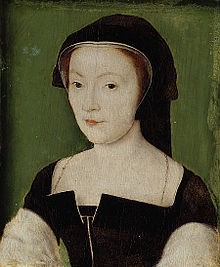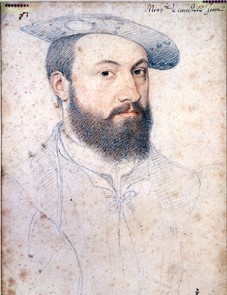James Melville: Life Story
Chapter 2 : Youth
The Melville family was settled in Fife, a reasonably prosperous part of the Kingdom of Scotland, to the north-east of Edinburgh.
Melville’s father, Sir John Melville of Raith, Captain of Dunbar Castle, was an early Scottish convert to Protestantism and supported the pro-English party in Scotland that sought to unite Britain through a marriage between the Queen, Mary, and Prince Edward of England. One of the obstacles to this plan was Cardinal Beaton. Beaton was assassinated, with covert encouragement from the English in 1546, but, although Sir John was associated with some of the assassins, he was not directly involved, and after the disastrous battle of Pinkie Cleugh in 1547, was dispatched to England to make terms. Whilst there, he shared information with the English government about Scottish and French military dispositions. For this treason, he was executed and his lands forfeited in December 1548.
One of the other men associated with the assassination of Beaton, and the pro-English faction, because of his strong religious affiliation with the Reformers, was Henry Balnaves of Halhill, near Kirkcaldy in Fife. Kircaldy was close to Raith, and according to John Knox, Sir John Melville was an early patron of Balnaves. This support was returned when Balnaves at some unknown time, but before 1569, adopted James Melville.
It is unknown what Melville’s early education consisted of, but we can probably assume he learnt to read and write in Scots, Latin and French, and that he was brought up in the Reformed Faith, as it was being preached by the Scots Reformer George Wishart, and later, John Knox.
Despite the association of the Melvilles with the pro-English party, in late 1549, when Jehan de Monluc, Bishop of Vallance who had been sent to Scotland as Ambassador from the French King was returning home, thirteen year old James Melville was chosen to accompany him. He was to join the household of the young Mary, Queen of Scots who had been sent to France the previous year both for safe-keeping, and with the intention of marrying her to the Dauphin François.
The journey to France was made via the west coast, with the objective of Vallance meeting the Irish lords who were trying to throw off English overlordship, preferring to be subject to Catholic France. The voyage was beset by storms, and the ship was obliged to shelter from the storm on a small island for thirteen days. By ‘ Fastrons Eve’ – that is, Shrove Tuesday, they reached Loch Foyle and were welcomed by the clan chief, O’Dochartaigh.
The trip to Ireland obviously amused Melville. He recorded that the Bishop had been making eyes at O’Dochartaigh’s daughter, so a ‘harlot’ was brought to him secretly. Whilst she was waiting for him in his room, she found a small box of liquid, sitting on the window ledge, drying out after being soaked during the storm. She consumed it, licking the entire contents out of the box. Vallance, when he came in, let out a cry of annoyance, and so his plan to break his vows of celibacy was discovered. He was angry because the liquid was some rare and precious balm of Egypt, that had been given to him as a gift by the Sultan of Turkey, following an embassy there.
Meanwhile, the daughter of O’Dochartaigh who had been running away from Vallance, was running after Melville. She offered to marry him and go away with him anywhere he chose. He fended her off, thanking her for her kind offer, but telling her he was too young, and had no income, and, in any event was en route to France in his Queen’s service.

After about three weeks of negotiations in Ireland, the party returned to Dumbarton. Following a short digression to Stirling to take leave again of the Dowager Queen, Marie of Guise, the party sailed from Dumbarton for France, via the Isle of Man, in two French ships. These vessels were returning to France after delivering money to pay the soldiers defending Scotland against the English in the War of the Rough Wooing.
After eight days at sea, Melville and the rest arrived at Le Conquet, in Brittany. Vallance hurried ahead to Paris, leaving Melville to travel in more comfort, furnishing him with enough money to buy horses and pay expenses for himself and two Scottish gentleman, his companions.
The trio fell in with two Frenchman and a Spaniard and decided to travel together in a journey that is reminiscent of every young traveller’s experience over the centuries. On the first night, the six shared a room in an inn, two to a bed. Melville sharing with the Spaniard. In the middle of the night he heard the two Scotsmen plotting to tell Vallance that the journey had cost twice as much as it did, to cover their own expenses. Then he heard the Frenchmen planning to take advantage of the others not speaking French to bamboozle them over the prices. Narrowly missing being mugged by a couple of cronies of the two Frenchmen, Melville finally made it to Paris just after Easter 1550.
Melville expected Vallance to introduce him to the Queen of Scots immediately, but, after a month, he still had not been taken to her, although Vallance made arrangements for him to improve his French and learn to play the lute. The Bishop even talked of adopting Melville, but nothing came of the idea.

Before being introduced to the Queen of Scots, Melville came to the attention of the Constable of France, the strangely named Anne de Montmorency, who, together with his ally Diane de Poitiers, strongly influenced Henri II. The Constable requested Melville to join his service, which Melville agreed to, provided the Bishop would let him go. Bishop Vallance agreed, and Melville became a servant of the Constable in May 1553.






